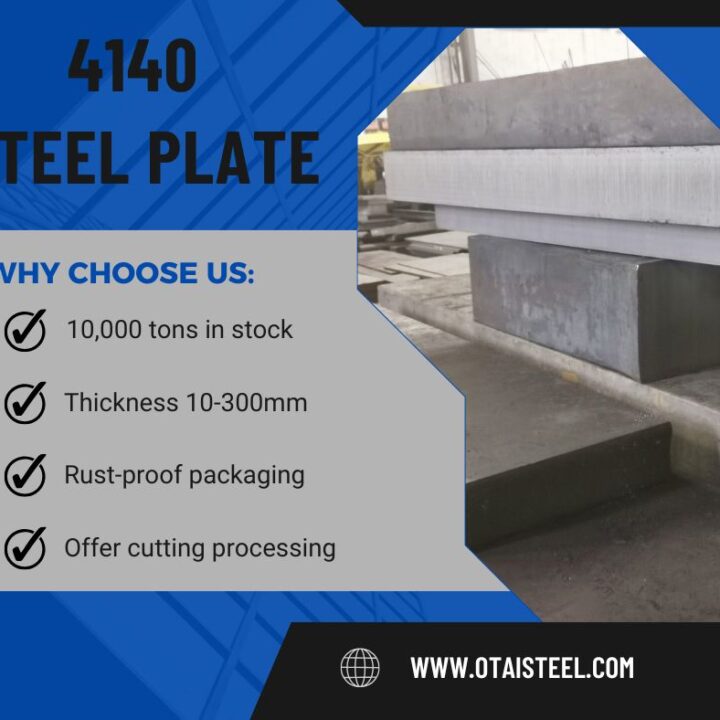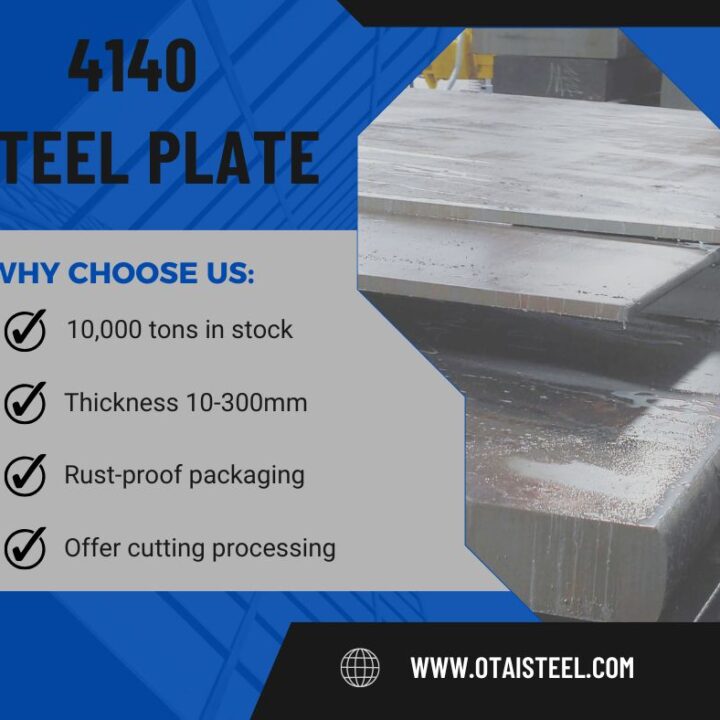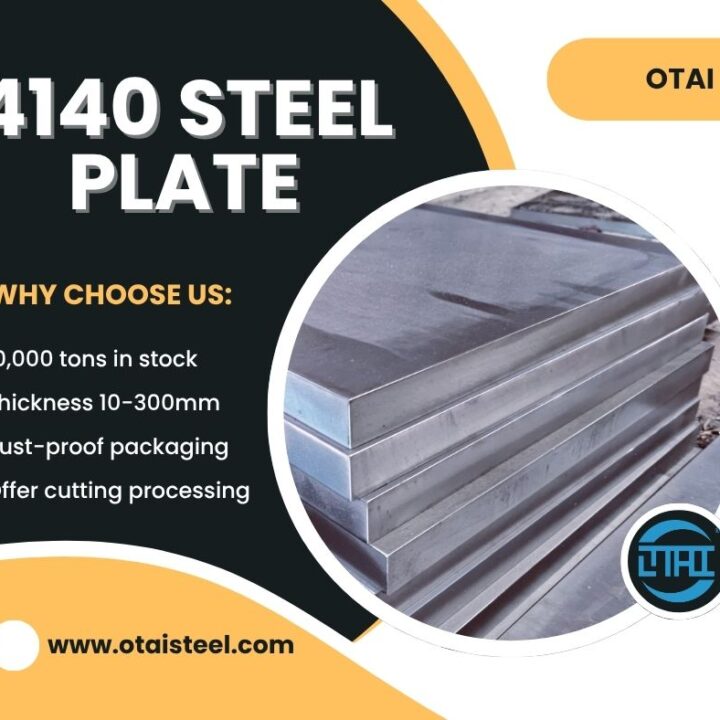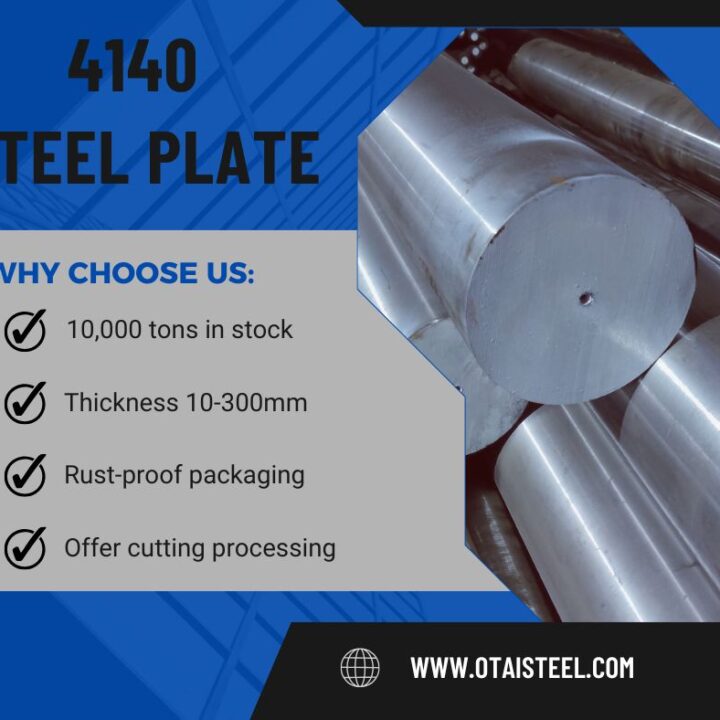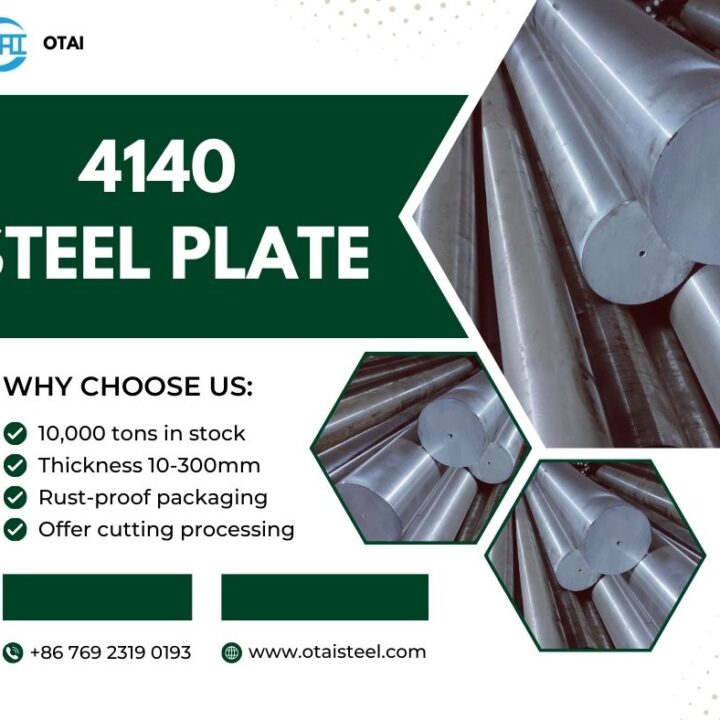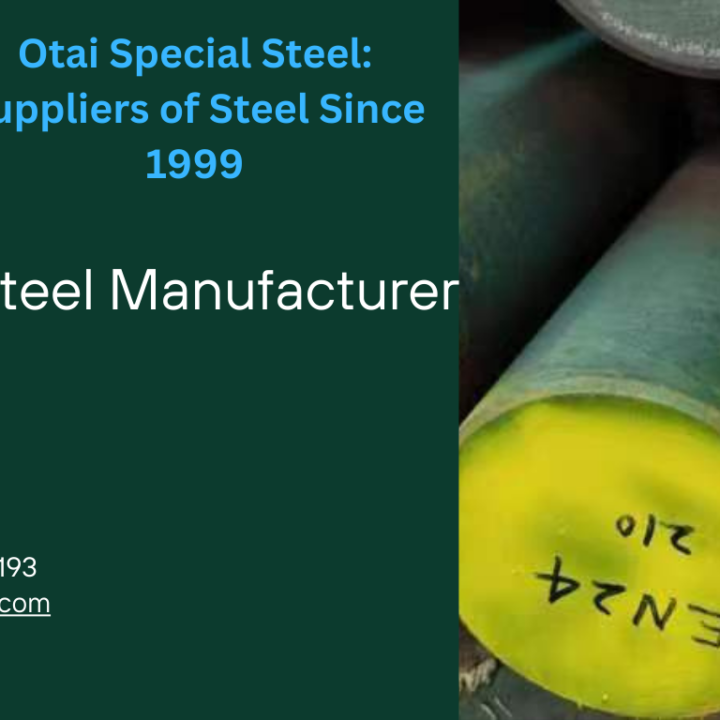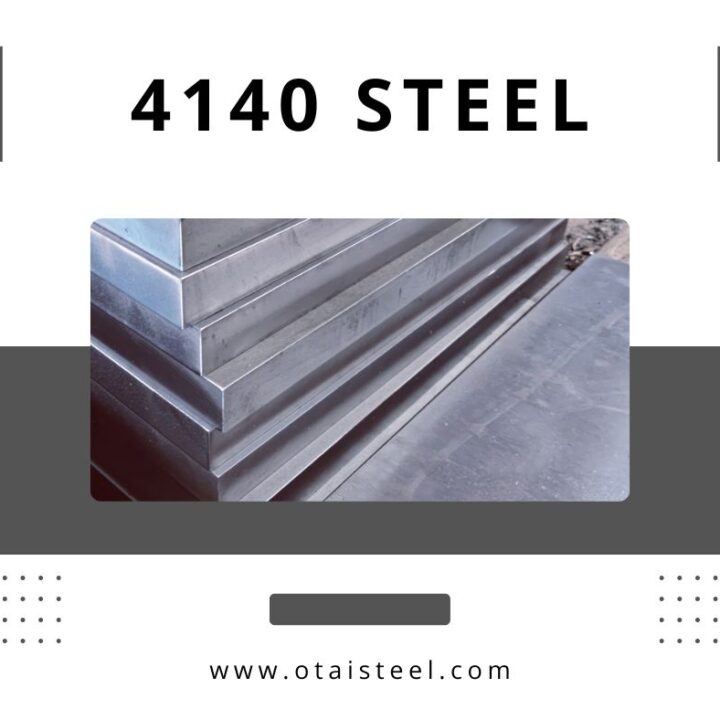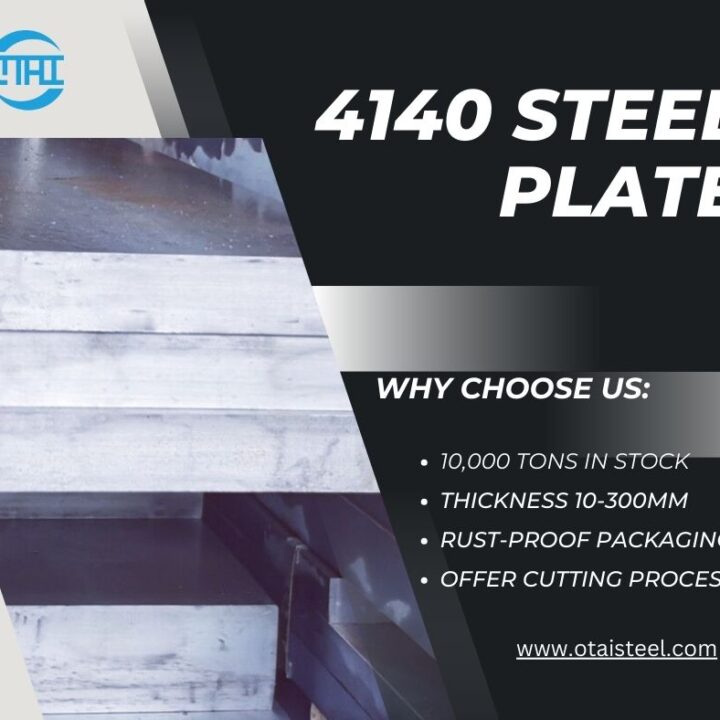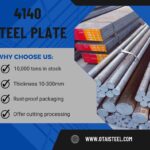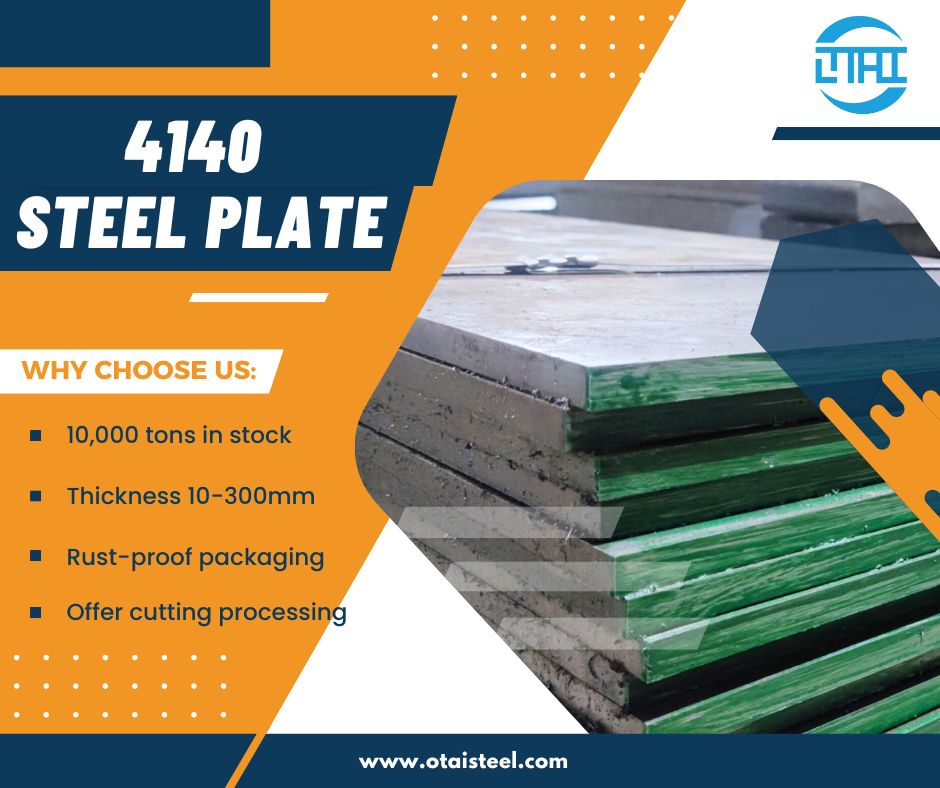 4140 Grade Steel Properties: What Makes It a Top Engineering Choice?
4140 Grade Steel Properties: What Makes It a Top Engineering Choice?
If you’ve ever worked with high-strength alloys, you’ve likely come across 4140 grade steel. It’s a powerhouse in the world of engineering materials—strong, tough, versatile, and widely used across industries like oil & gas, automotive, tooling, and construction.
But what are the real 4140 grade steel properties that make it stand out? Let’s dive into its chemistry, mechanical behavior, and heat-treated characteristics, so you know exactly what you’re working with and whether it fits your application.
🧪 What Is 4140 Grade Steel Made Of?
4140 steel is a chromium-molybdenum alloy steel, also known as AISI 4140 or ASTM A29 Grade 4140. It contains a moderate amount of carbon and key alloying elements that enhance its hardenability, wear resistance, and strength under heat-treated conditions.
Here’s a breakdown of the typical chemical composition:
| Element | Content (%) |
|---|---|
| Carbon (C) | 0.38 – 0.43 |
| Chromium (Cr) | 0.80 – 1.10 |
| Manganese (Mn) | 0.75 – 1.00 |
| Molybdenum (Mo) | 0.15 – 0.25 |
| Silicon (Si) | 0.15 – 0.30 |
| Phosphorus (P) | ≤ 0.035 |
| Sulfur (S) | ≤ 0.040 |
This carefully balanced chemistry enables 4140 alloy steel mechanical properties to be tailored through heat treatment processes like quenching, tempering, and annealing.
🛠️ Key Mechanical Properties of 4140 Grade Steel
The strength of 4140 steel in different conditions makes it highly desirable. Let’s look at some core mechanical values:
| Condition | Tensile Strength (MPa) | Yield Strength (MPa) | Hardness (HBW) | Elongation (%) |
|---|---|---|---|---|
| As-rolled | 850 – 1000 | 650 – 700 | 200 – 250 | 20 – 25 |
| Quenched & Tempered | 1080 – 1250 | 850 – 1000 | 285 – 320 | 12 – 16 |
| Annealed | 655 – 885 | 415 – 585 | 187 – 229 | 23 – 30 |
These values may vary depending on the size and form of the material.
4140 grade steel mechanical strength is exceptional after quenching and tempering, offering both wear resistance and impact toughness. This is why it’s often used in load-bearing parts, shafts, and high-strength gears.
🔥 Heat Treatment Effects on 4140 Grade Steel
Heat treatment unlocks the true performance of 4140 steel. Here’s how the key processes impact its properties:
| Heat Treatment | Purpose | Effect |
|---|---|---|
| Annealing | Soften material for machining | Reduces hardness, improves ductility |
| Normalizing | Refine grain structure | Improves uniformity and toughness |
| Quenching | Rapid cooling (usually oil) | Increases hardness significantly |
| Tempering | Reheat after quenching | Adjusts toughness, reduces brittleness |
| Stress Relieving | Relieve internal stress | Stabilizes structure post-machining |
A preheat before welding 4140 steel is also recommended to avoid cracking due to its hardenability.
⚙️ Common Forms & Applications
4140 steel is available in many forms, including:
-
4140 round bar
-
4140 steel plate
-
4140 forged blocks
-
4140 alloy steel shafts
Because of its balanced strength-to-toughness ratio, 4140 is used in:
-
Oil tool components
-
Hydraulic cylinder rods
-
Automotive spindles and crankshafts
-
Tool holders and fixtures
-
Heavy-duty bolts and fasteners
Its versatility is what makes it a favorite among material engineers.
🌡️ Thermal and Physical Properties
| Property | Value |
|---|---|
| Density | 7.85 g/cm³ |
| Modulus of Elasticity | 205 GPa |
| Thermal Conductivity | 42.6 W/m·K |
| Specific Heat | 0.475 J/g·K |
| Thermal Expansion (20–100°C) | 12.3 µm/m·K |
These properties make 4140 steel stable under temperature changes and suitable for moderate heat service applications.
🧩 How Does It Compare to Other Grades?
Many clients ask how 4140 compares to grades like 4340 or 8620. In short:
-
4140 vs 4340 steel: 4340 has higher toughness and fatigue strength, but 4140 offers better machinability.
-
4140 vs 8620 steel: 8620 is lower-carbon and more suitable for carburizing, while 4140 excels in through-hardening applications.
If you’re unsure, always consider the specific application requirements—load, environment, and manufacturing constraints.
🌟 Why 4140 Grade Steel Is So Popular
Let’s summarize why 4140 stands out:
-
✔ Excellent balance of strength, ductility, and toughness
-
✔ Readily heat treated to achieve target mechanical values
-
✔ Easily machinable in annealed condition
-
✔ Widely available in various forms and sizes
-
✔ Good resistance to wear and fatigue
These features make it the perfect “all-rounder” steel grade for engineers and manufacturers alike.
🏭 Why Choose Otai Special Steel?
-
🌍 Global Experience: Exported to 50+ countries, including long-term clients like Thyssenkrupp and Schlumberger.
-
📦 Massive Inventory: Over 10,000 tons of alloy steel in stock year-round.
-
🔧 Processing Ready: We offer cutting, heat treatment, and ultrasonic testing (UT) in-house.
-
✅ Strict QC: Guaranteed chemical and mechanical properties with SGS & BV third-party inspections.
-
🚚 Fast Delivery: Custom cut-to-size and prompt logistics services to reduce your lead time.
📧 Contact us: jack@otaisteel.com
📱 WhatsApp: +8676923190193
❓ FAQ: Frequently Asked Questions
Q1: Is 4140 grade steel weldable?
Yes, but preheating is recommended, especially for thicker sections, to avoid cracking.
Q2: Can 4140 steel be surface hardened?
Yes! Nitriding 4140 steel is a common way to enhance surface hardness while keeping the core tough.
Q3: Is 4140 hot rolled or cold rolled?
Both options exist, but hot rolled 4140 steel is more common for structural use.
Q4: What’s the ultimate tensile strength of 4140 steel?
It ranges from 850 MPa in the annealed state to over 1250 MPa when heat treated.
Q5: How can I identify 4140 steel?
You can confirm it using a spectrometer or check hardness and mechanical performance after machining.
